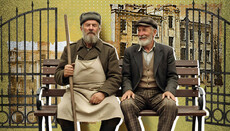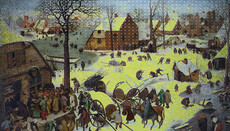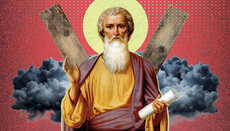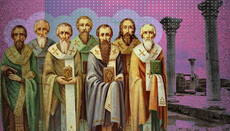Why Phanar did not give autocephaly to Ukrainian schismatics 100 years ago
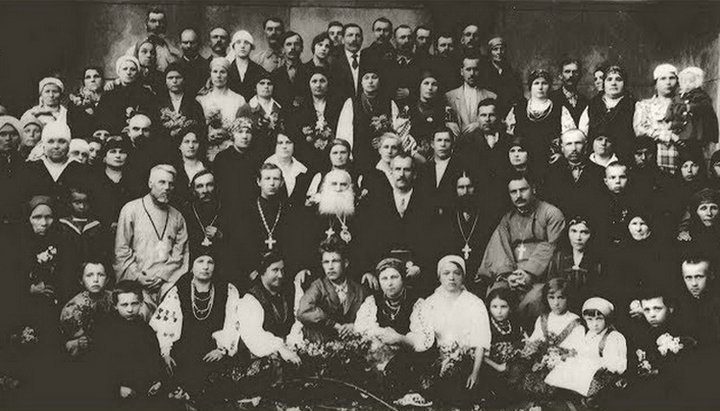
The UOJ begins a series of articles on the history of the Church of Constantinople, its relationship with the Russian Church, and on the Ukrainian issue.
At the end of 2018, the Orthodox public was shaken by the news that the UOC and the ROC suspended the Eucharistic communion with the Patriarchate of Constantinople.
This caused a whole avalanche of indignant comments from both the Phanar theologians and those who sympathize with the Russian Church. All of them accused the UOC and the ROC of tearing apart the Body of Christ and the destruction of the Church. Their argument was that Patriarch Kirill and the episcopate of both the Russian and the Ukrainian Church had no moral right to act so harshly and even cruelly towards their fellow Phanariots.
Common believers who belonged to the UOC and the ROC, who can’t receive communion in the churches of the Constantinople Patriarchate since the cessation of Eucharistic communion with the Phanar, complained especially.
In turn, those who commemorate in their prayers Patriarch Bartholomew as their head sounded regretful about the impossibility of serving the Eucharist together with the Ukrainian and Russian brothers, which was especially noticeable on Mount Athos.
However, as official representatives of the Ukrainian and Russian Orthodox Churches explained, the reason for such a tough decision was not just the intervention of Patriarch Bartholomew in the internal affairs of the Ukrainian Orthodox Church, which is in prayerful and spiritual unity with the Russian Orthodox Church, but the granting of a legitimate status to Ukrainian schismatics, according to which two religious organizations of Ukraine, which until then had not been recognized by any of the Orthodox Churches of the world, were taken in communion with the Patriarchate of Constantinople.
Constantinople, Rus, Russia
On October 11, 2018, Patriarch Bartholomew, together with the Synod of bishops under his jurisdiction, decided to remove the anathema from the former Metropolitan of Kiev and All Ukraine Filaret (Denisenko), the anathema, the validity of which for many years no one had disputed, including Patriarch Bartholomew.
Attempts to reach out to the Phanariots, to appeal to their reason and conscience did not give positive results. And then the question arises – why? After all, the actions of Patriarch Bartholomew were such an obvious violation of the canons that he simply couldn’t but understand that. Nevertheless, he did so. Why? And is the current situation new for the two Churches?
Phanariots treated the Russian Church in different ways. When the Byzantine Empire possessed state and military power, and the Emperor of Constantinople was viewed as a defender of Orthodoxy, the attitude of the Patriarchate of Constantinople towards the young Russian Church with its See in Kiev was appropriate – condescending and supportive. Over the centuries, the Greeks sent their metropolitans to Kiev, largely determined the church-liturgical tradition, and generally treated the Russians in the same way as today's American missionaries perceive poorly-educated people of the African continent.
But later, when the patriarch concluded a union with Rome, and with the fall of Constantinople he became fully dependent on the Turkish sultan, the situation changed radically. Now it is the Russian Church that took the first place in the Orthodox world.
The reason for the suspention of Eucharistic communion between the Russian Orthodox Church and the Patriarchate of Constantinople was not just the Phanar’s interference in the affairs of the UOC but the granting of legitimate status to schismatics.
The Patriarchates of Alexandria, Antioch and Jerusalem existed only nominally – practically without a congregation and temples. The Patriarch of Constantinople, although it pastored the multi-million Greek population of the Turkish Empire, was in fact in such a deplorable situation that its only concern was survival rather than care of Russian believers. The patriarch of the once great Tsar Grad and the synclite turned into an ordinary beseecher, who counted on the financial assistance of yesterday's neophytes.
The establishment of the patriarchate in Rus only strengthened this position – the Patriarch of Moscow became the head of the largest Orthodox Church in the world and the most influential patriarch.
Such a situation existed until the beginning of the twentieth century, when the patriarchs of Constantinople, not without the help of their Western partners, decided to regain their lost positions. It was then that the Phanar’s struggle actually began against the place and influence that the Moscow Patriarch occupied in the Orthodox world. This struggle continues today. This is the issue we are going to talk about.
Patriarch Germanos V and the Russian Church
In 1913, at the age of 77 years, Metropolitan Germanos V (Kavakopoulos) became the Patriarch of Constantinople. He was a supporter of the management system known as “Gerondism”: several of the oldest bishops, permanent members of the Holy Synod (first in the number of 6, and then 12), came from their residences to Constantinople (Istanbul) for long periods.
In addition to the Holy Synod, a special administrative institution, the Continuous National Mixed Council, was created under the patriarch. It consisted of 12 members: 4 bishops and 8 laymen. They were engaged in the control of charitable institutions, schools, hospitals, supervised the execution of wills and other civil acts. In church affairs, the Patriarch was subordinated to the Synod, and in civil matters – to the Continuous National Mixed Council.
As the researchers note, it was the admission of laymen that paved the way for politicization and the extreme Greek nationalism of the Church of Constantinople, which gradually became dependent on the nationalistically-minded richest Greek inhabitants of the Ottoman Empire, closely associated with the Greek Kingdom.
When the Patriarch of Constantinople concluded a union with Rome, and the Phanar became fully dependent on the Turkish sultan, the Russian Church enjoyed primacy in the Orthodox world.
The first open manifestation of intolerance towards the Russians was the active involvement of the Greeks in the struggle against the Russian Imiaslavie-Athonites (name-worshippers), who in 1913 were expelled from the St. Andrew's Skete (the centre of Imiaslavie) and the Russian St. Panteleimon Monastery. Later, in circles close to Patriarch Germanos, it was thought that even in the event of repentance, the Russian monks could not settle on Mount Athos.
When the Bolsheviks came to power in Russia, the Phanar tried in every way to take advantage of the weakening of the Russian Church. In 1918, after the October Revolution, when it became clear that the lives of believers in the Soviet Union would change dramatically for the worse, Patriarch Germanos created a special commission that was supposed to deal with the transfers of the US Greek parishes from the subordination of the ROC to the jurisdiction of the Greek Orthodox Church. All this was done without the knowledge of the canonical authority of the Russian Orthodox Church in North America. This commission was headed by Metropolitan Meletios (Metaxakis), a man who later became the Patriarch of Constantinople and, in fact, formed the modern worldview of the Phanariots.
At the same time, events that forced Patriarch Germanos V to retire occurred on Phanar. His overly loyal policy towards the Turkish authorities provoked discontent among ordinary believers, and during the Great Entry to the Patriarchal Liturgy there were often numerous indignant cries of “Down!” The Patriarch promised to resign, which he did on October 25, 1918.
Metropolitan Dorotheos (Mammelis) of Prussia (present-day Bursa) became the Locum Tenens of the Patriarchal Throne and held this position until his death in 1921.
Metropolitan Dorotheos and his policy
The policy of Metropolitan Dorotheus in relation to the Turkish authorities was fundamentally different from that pursued by Patriarch Germanos V. It was Met. Doropheos who actually organized a political conspiracy against the Ottoman Empire, when on January 21, 1919, under the protection of the Greek-Irian regiment located in Istanbul, abolished the teaching of the Turkish language in schools and issued a proclamation on accession to Greece.
Under the influence of this proclamation, the local Greeks refused to recognize the Turkish government, which cost them a lot of trouble later, as they were practically expelled from the city (for example, if at the beginning of the XIX century the number of the Greek population of Istanbul was 150,000, then it almost disappeared, and today it is about 2,000 people).
The difficult political situation in which the Patriarchate of Constantinople found itself prompted Metropolitan Dorotheos to attempt to establish close ties with representatives of other Christian denominations of the world. In 1920, he issued the Encyclical of the Ecumenical Patriarchate "Unto the Churches of Christ Everywhere".
In this document, the Locum Tenens of the Patriarchal Throne proposed particular measures that, in his opinion, should have contributed to the rapprochement between the various Christian Churches. They include, among others, the following suggestions:
- the acceptance of a uniform calendar for the celebration of the great Christian feasts at the same time by all the churches;
- the exchange of brotherly letters on the occasion of the great feasts of the churches' year as is customary, and on other exceptional occasions;
- close relationships between the representatives of all churches wherever they may be;
- allowing each other the use of chapels and cemeteries for the funerals and burials of believers of other confessions dying in foreign lands;
- the settlement of the question of mixed marriages among the confessions and so on.
At that time, many of his initiatives were not implemented. However, the actions of the successors of Metropolitan Dorotheos (especially Patriarch Meletios) and the current Patriarch Bartholomew demonstrate that the Phanar did not abandon them. Phanariots do not disdain to receive education in the theological schools of the Catholic Church (the same Patriarch Bartholomew graduated from the Pontifical Oriental Institute), the question of mixed marriages was considered at the Crete Council in 2016, and allowing each other “the use of chapels”, is a common thing, especially for Western Europe.
First Ukrainian "autocephaly" and Phanar
Despite the most serious internal problems and upheavals, the Constantinople Patriarchate conducted in 1919-20 active negotiations on the recognition of the “autocephalous Church” that arose in Ukraine. According to the “Law on Supreme Power in the Ukrainian Autocephalous Peacekeeping Church”, which was adopted by the Directorate of Simon Petliura, the newly formed “Church” was to completely break its relations with the Russian Church and allow the state to take an active position on church matters.
On January 1, 1919, the autocephaly was officially proclaimed. The first task that the government of Petliura set for itself was the international recognition of the UAOC by world Orthodoxy and, above all, by the Patriarchate of Constantinople. For this purpose, a delegation led by the Commissioner of the Ministry of Religion Oleksa Pototsky was sent to Istanbul.
An interesting fact is that while reporting on the progress of negotiations with Metropolitan Dorotheos, Pototsky noted that the first serious argument against the immediate recognition of the UAOC, which the Locum Tenens expressed, was not canonical law but ... fear that the patriarchy might expose itself to reprisals on behalf of the Russian Empire in case of the victory over the Bolsheviks and its revival.
The second argument is the actions in Istanbul of the bishops of the Russian Church exiled from Ukraine, including by the Directorate, among whom were such authoritative persons as Metropolitan Anthony (Khrapovitsky) of Kiev and Archbishop Eulogius (Georgievsky) of Volyn. It was these bishops who tried to convince Metropolitan Dorotheos that contacts and negotiations with the Directorate are a mistake that must be corrected in the interests of the entire Orthodox Church.
Despite this, negotiations between Pototsky and the Locum Tenens of the Patriarchal Throne were crowned with relative success, resulting in a draft letter to Simon Petliura, which stated that claims to "the autocephaly of the Ukrainian Orthodox Church are not without historical and canonical grounds".
At the same time, the Patriarchate of Constantinople set forth the conditions under which the recognition of Ukrainian autocephaly could take place:
1. the independence of the country;
2. an appeal of the Ukrainian government and the Ukrainian Church on this issue to the Church which it is affiliated with (i.e. the Russian Church);
3. the presence of the Ecumenical Patriarch, which is necessary to give legitimacy to the whole process.
Pototsky managed to achieve the removal of the second point through negotiations, but the absence of the Patriarch (Dorotheos was only a locum tenens), and then the fall of the Directorate reverses the process of recognizing Ukrainian autocephaly.
The attempts of the Polish government to transfer the Polish Orthodox Church from the jurisdiction of the Moscow Patriarchate to the jurisdiction of Constantinople were also unsuccessful. Archbishop Anastasius of Chişinău (Gribanovsky), who was then in Istanbul and whom the Greeks assured that “he has no reason to worry about any decisions unacceptable for Russia”, actively opposed this initiative.
But, as it turned out, there were such reasons because later the Constantinople Patriarchate tried to establish its shaky position in the Orthodox world by any means. Especially during the patriarchate of the above-mentioned Meletios (Metaxakis), which we will describe in the next article.
The article uses materials from the book by M.V. Shkarovsky "Constantinople and Russian Churches in the period of great upheavals (1910-1950s)", M, PH "Poznanie", 2019.
